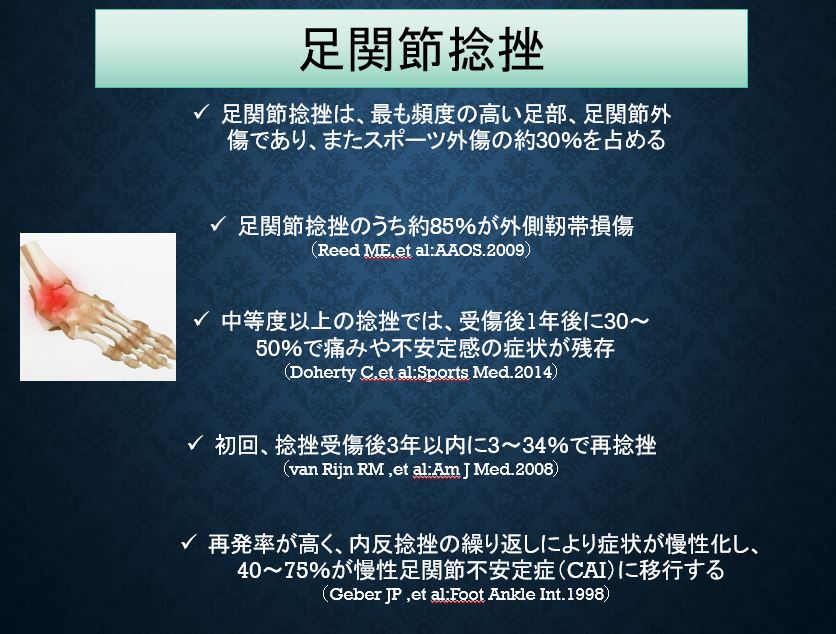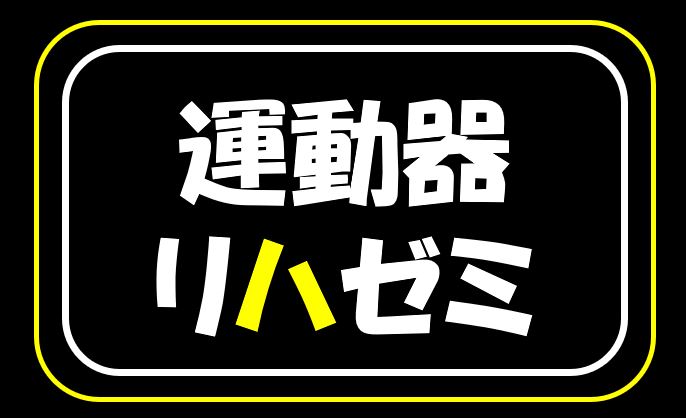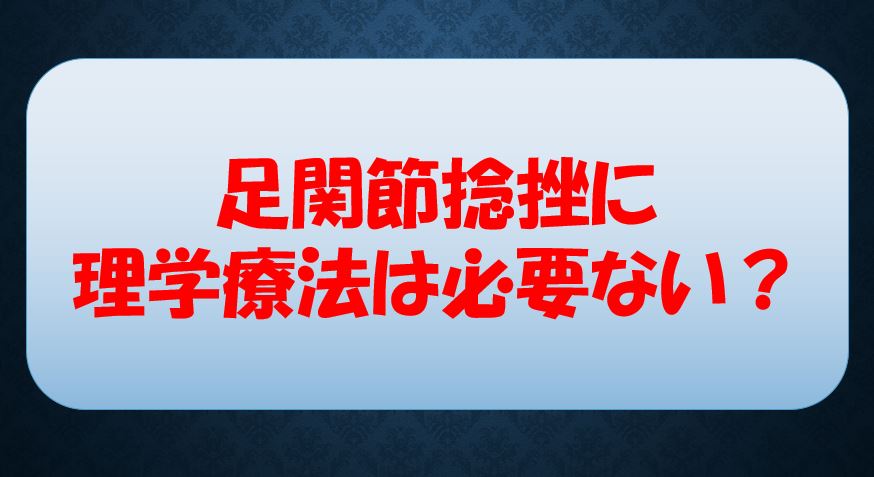こんにちは!
運動器専門のリハビリスタッフです!!
いつもお世話になります。
今回は、『足関節捻挫に理学療法は必要ない?』について解説させていただきます。
足関節捻挫は、最も頻度の高い足部、足関節外傷であり、またスポーツ外傷の約30%を占めるとされています。
足関節捻挫のうち約85%が外側靭帯損傷で(Reed ME,et al:AAOS.2009)、中等度以上の捻挫では、受傷後1年後に30~50%で痛みや不安定感の症状が残存する(Doherty C,et al:Sports Med.2014)と報告されています。
また、初回、捻挫受傷後3年以内に3~34%で再捻挫する(van Rijn RM ,et al:Am J Med.2008)とされています。
足関節捻挫は再発率が高く、内反捻挫の繰り返しにより症状が慢性化し、40~75%が慢性足関節不安定症(CAI)に移行すると報告されています。(Geber JP ,et al:Foot Ankle Int.1998)

そんな中、2016年に、単純な足関節捻挫に対して、指導付き理学療法プログラムは効果があるのかを報告している論文が海外で報告されています。
内容が気になるところです。
◆論文紹介
Randomized Controlled Trial
BMJ (IF: 30.22; Q1)
. 2016 Nov 16;355:i5650.
doi: 10.1136/bmj.i5650.
Effect of early supervised physiotherapy on recovery from acute ankle sprain: randomised controlled trial
急性足関節捻挫からの回復に対する早期の指導付き理学療法の効果:無作為化比較試験
Robert J Brison 1 2 3, Andrew G Day 2 3, Lucie Pelland 4 5, William Pickett 1 3, Ana P Johnson 3, Alice Aiken 4, David R Pichora 5 6, Brenda Brouwer 4 5
Affiliations expand
- PMID: 27852621 PMCID: PMC5112179 DOI: 10.1136/bmj.i5650
Abstract
Objective: To assess the efficacy of a programme of supervised physiotherapy on the recovery of simple grade 1 and 2 ankle sprains.
今回の目的は グレード1および2の単純な足関節捻挫に対して、指導付き理学療法プログラムの回復効果を評価すること。
Design: A randomised controlled trial of 503 participants followed for six months.
デザイン 503名の参加者を対象に、6ヶ月間の追跡調査を行った無作為化対照試験。
Setting: Participants were recruited from two tertiary acute care settings in Kingston, ON, Canada.
設定。参加者はカナダのオンタリオ州Kingstonにある2つの三次救急医療施設から募集された。
Participants: The broad inclusion criteria were patients aged ≥16 presenting for acute medical assessment and treatment of a simple grade 1 or 2 ankle sprain. Exclusions were patients with multiple injuries, other conditions limiting mobility, and ankle injuries that required immobilisation and those unable to accommodate the time intensive study protocol.
参加者 対象者:16歳以上で、グレード1または2の単純な足関節捻挫の急性医学的評価と治療を受けた患者が対象となった。除外されたのは、複数の傷害を持つ患者、運動能力を制限する他の疾患を持つ患者、足首を固定する必要がある患者、および時間のかかる試験プロトコルに対応できない患者であった。
Intervention: Participants received either usual care, consisting of written instructions regarding protection, rest, cryotherapy, compression, elevation, and graduated weight bearing activities, or usual care enhanced with a supervised programme of physiotherapy.
介入。参加者は、保護、安静、寒冷療法、圧迫、挙上、および段階的な荷重練習に関する書面による指示からなる通常のケア、または通常のケアに監視付きの理学療法プログラムを加えたものを受けた。
Main outcome measures: The primary outcome of efficacy was the proportion of participants reporting excellent recovery assessed with the foot and ankle outcome score (FAOS). Excellent recovery was defined as a score ≥450/500 at three months. A difference of at least 15% increase in the absolute proportion of participants with excellent recovery was deemed clinically important. Secondary analyses included the assessment of excellent recovery at one and six months; change from baseline using continuous scores at one, three, and six months; and clinical and biomechanical measures of ankle function, assessed at one, three, and six months.
主要評価項目 有効性の主要評価項目は、足と足首のアウトカムスコア(FAOS)で評価し、優れた回復を報告した参加者の割合であった。優れた回復とは、3ヵ月後のスコアが450/500以上であることと定義した。優れた回復を示した被験者の絶対的な割合が15%以上増加した場合、臨床的に重要であると判断した。副次的解析には、1ヵ月後と6ヵ月後の優れた回復の評価、1ヵ月後、3ヵ月後、6ヵ月後の連続スコアを用いたベースラインからの変化、1ヵ月後、3ヵ月後、6ヵ月後に評価した足首機能の臨床的および生体力学的測定値が含まれた。
Results: The absolute proportion of patients achieving excellent recovery at three months was not significantly different between the physiotherapy (98/229, 43%) and usual care (79/214, 37%) arms (absolute difference 6%, 95% confidence interval -3% to 15%). The observed trend towards benefit with physiotherapy did not increase in the per protocol analysis and was in the opposite direction by six months. These trends remained similar and were never statistically or clinically important when the FAOS was analysed as a continuous change score.
結果 3ヵ月後に優れた回復を達成した患者の絶対的な割合は、理学療法群(98/229、43%)と通常治療群(79/214、37%)の間に有意な差はなかった(絶対的な差6%、95%信頼区間-3%~15%)。観察された理学療法による効果の傾向は、プロトコルごとの解析では増加せず、6ヵ月後には逆方向になっていました。これらの傾向は、FAOSを連続的な変化スコアとして分析しても同様であり、統計的にも臨床的にも重要ではなかった。
◆論文の結論
Conclusions: In a general population of patients seeking hospital based acute care for simple ankle sprains, there is no evidence to support a clinically important improvement in outcome with the addition of supervised physiotherapy to usual care, as provided in this protocol.Trial registration ISRCTN 74033088 (www.isrctn.com/ISRCTN74033088).
結論 単純な足首の捻挫で病院ベースの急性期治療を受けようとする患者の一般集団において、このプロトコルで提供された通常のケアに指導付き理学療法を追加することで、臨床的に重要な転帰の改善を支持する証拠はない。
◆まとめ
上記の論文では、16歳以上の503名の単純な足関節捻挫に対して、6か月間追跡調査を行い、指導付き理学療法プログラムが効果を発揮するのかを検証しています。
参加者は、通常治療群(保護、安静、寒冷療法、圧迫、挙上、および段階的な荷重練習に関する書面による指示からなる通常のケア)と理学療法群(通常のケアに監視付きの理学療法プログラム)の2群に分けられています。
評価項目は、1ヵ月後、3ヵ月後、6ヵ月に足と足首のアウトカムスコア(FAOS)で評価しています。
結果は3ヵ月後に優れた回復を達成した患者の割合は、理学療法群(98/229、43%)、通常治療群(79/214、37%)と有意な差はなかった。
よって病院で急性期治療を受ける単純な足関節捻挫では、指導付き理学療法は特別良い効果をもたらすことはないようです。
今回は、『足関節捻挫に理学療法は必要ない?』について解説させていただきました。



